Abstract. We present compelling evidence that reality encompasses more than just our own universe by examining several celestial objects that are widely known but not fully understood.
First, we argue that the Milky Way galaxy is not planar or warped at both ends, but rather convex, having emerged from a quasi-spherical universe.
Second, we propose that some nebulae and galaxies are not conventional celestial objects, but gaps (white holes) in the boundaries of our universe through which we can peer into other universes.
Finally, we introduce invisible universes and give the example of the Butterfly Nebula (NGC 6302), which emanates from opposite sides of a universe that we cannot see.
Based on these discoveries, we present the “Theory of Decaying Universes” (TDU).
This theory provides a new framework for understanding the multiverse structure of reality, challenges the prevailing notions of the Big Bang, dark energy and dark matter, and explains the multistage process of matter creation.
The theory encourages researchers interested in understanding the true nature of physical reality to begin by estimating the dimensions and shape of the other universe from which the Milky Way galaxy emerged into our universe.
Key words and phrases. cosmos, cosmology, astrophysics, universe, Milky Way Galaxy, nebulae, Orion nebula (M 42), Ring Nebula (M57), NGC 4632 galaxy, Butterfly Nebula (NGC 6302), periodic table. #Cosmology #Multiverse
“What is the extent of physical reality? We’re confident that it’s more extensive than the domain that astronomers can ever observe, even in principle. That domain is definitely finite. That’s essentially because, like on the ocean, there’s a horizon that we can’t see beyond. And just as we don’t think the ocean stops just beyond our horizon, we expect galaxies beyond the limit of our observable universe.”
—Lord Martin Rees[1]
I dedicate this work to Lord Martin Rees, who said in 1998 that “our entire universe may be just one element – one atom, as it were – in an infinite ensemble: a cosmic archipelago.”
License CC BY-NC-ND 4.0
Contents
1. Introduction
2. Unveiling the Mysteries of the Milky Way
3. Galaxies and stars in other universes
4. The multiverse paradigm of physical reality
5. The Theory of Decaying Universes
References
1. Introduction
In casual conversation, the terms “reality” and “universe” are sometimes used interchangeably, but in more precise contexts they have different meanings.
The term “universe” usually refers to the totality of space, time, matter, and energy that exists. When scientists speak of the universe, they often mean the entirety of physical existence, which includes all galaxies, stars, planets, subatomic particles, forces, and everything in between.
“Reality” is a broader and more philosophical term that encompasses everything that is real or exists, whether it is perceived, conceptualized, or even beyond our understanding. Reality includes not only the physical universe, but also ideas, thoughts, feelings, dreams, mathematical truths, and more. The question of the nature of reality leads us to the territory of what is really “real” and how we can know it.
A central aspect of our argument is a reconsideration of the structure of the Milky Way galaxy. This assertion encourages a reassessment of our cosmic origins and the structure of reality and our universe in general.
To further advance this paradigm shift, we investigate the nature of certain nebulae and galaxies and hypothesize that they may not be conventional celestial bodies. This theory not only challenges established ideas about the Big Bang, dark matter and dark energy, but also reimagines the process of matter formation through a multi-step mechanism.
The detailed data provided by GAIA in conjunction with the Theory of Decaying Universes could cause a profound rethinking of our understanding of physical reality and push researchers to explore the reality beyond the observable universe. They suggest that a comprehensive understanding of our universe can be achieved by estimating the dimensions and shape of another universe from which our Milky Way galaxy emerged.
2. Unveiling the Milky Way Mysteries
2.1. Insights from Gaia Data Release 3
Our Solar System is part of the Milky Way Galaxy which has nearly 1.7 billion stars and takes approximately 225-250 million years to complete one orbit around its center. Its average velocity is about 828,000 km/h (approximately 514,000 mph). Despite this high speed, the immense distance involved makes the orbital period extremely long.
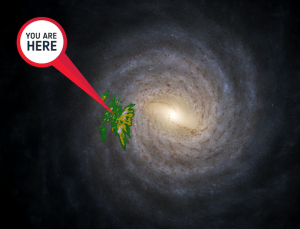
Figure 1. You are here in Milky Way. Credit: ESA Gaia, DPAC, CC BY-SA 3.0 IGO.
The image in Figure 1 shows an artist’s impression of the Milky Way with an overlay of young stars from Gaia DR3, highlighting our solar system’s position (in yellow-green).
The “You are here” sign points to the Sun [2].
The GAIA mission is a division of the European Space Agency and generates an extremely accurate three-dimensional map of close to two billion celestial objects in our galaxy and beyond. It maps their motion, brightness, temperature and composition [3].
The extensive selection of celestial objects documented by Gaia’s work not only enhances our understanding of our own solar system and galaxy, but also contributes to the field of fundamental physics that governs the entire universe.
In June 2022, ESA’s Gaia mission published “Gaia DR3,” its new treasure trove of data about Milky Way, the galaxy we call home [4][5].
Overall, Gaia’s DR3 contains new and improved details for nearly two billion stars in our galaxy. The catalog contains new information about chemical compositions, stellar temperatures, colors, masses, ages, and the speed at which stars move toward or away from us (radial velocity). Much of this information was uncovered by the newly published spectroscopy data, a technique that splits starlight into its individual colors (like a rainbow). The data also includes specific subsets of stars, such as those that change their brightness over time.
2.2. Apparent Inconsistency of Gaia DR3.
Gaia DR3 shows an apparent inconsistency when it presents the Milky Way galaxy as asymmetric and symmetric at the same time.
Seen from Earth, the image of the Milky Way galaxy shown in Figure 2 appears to be asymmetric. The upper side of the galaxy appears to be compressed and the lower side elongated.
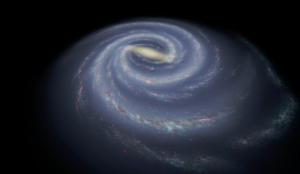
Figure 2. The Milky Way viewed from Earth. Credit: ESA Gaia, DPAC, CC BY-SA 3.0 IGO.
As Gaia explains, “more than 30 million Milky Way stars are moving towards or away from us,” and “we can clearly see that on average the stars do not rotate with circular motions around the center of the galaxy. This is because our Milky Way is not symmetrical about its axis.”
Although the above image of the Milky Way as seen from Earth is real, this explanation for the movement of the stars is not accurate.
Thanks to the Gaia DR3 video[7], we can see that the Milky Way is perfectly symmetrical about its axis when viewed from above, as shown in Figure 3 below. The Milky Way is not asymmetric at all.
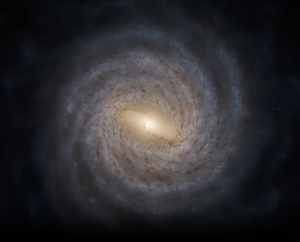
Figure 3. The Milky Way seen from above. Credit: ESA Gaia, DPAC, CC BY-SA 3.0 IGO
So how is it possible that Gaia scientists describe the Milky Way as asymmetrical in one article and symmetrical in another?
One possibility is that they could not find a reasonable explanation in the current paradigm of the universe as to why the lower part of the galaxy is so elongated compared to the upper part.
In fact, since the late 1950s, astronomers have believed that the Milky Way galaxy has an intriguing and somewhat unusual property: it is warped. They believe that its disk is not flat, but curved upwards on one side and downwards on the other. The cause of this warping has been debated for years. This warping of the Milky Way has been the subject of study and debate among astronomers for years.
Yet, it seems that Gaia scientists do not share the hypothesis of the warping of the Milky Way. Otherwise they would not have explained that one and the same galaxy is asymmetric and symmetrical at the same time. They have understood that the curvature of the Milky Way is not a deformation that could be curved upwards on one side and downwards on the other, but something else that creates a convex structure. And this convex shape cannot be explained by anything known in the current paradigm of a unique universe.
2.3. The Milky Way Galaxy is leaked from another universe.
In a multiverse paradigm, however, this deformation can only occur if the galactic disk of the Milky Way is actually not planar or warped at both ends, but convex and appears in our universe warped around the boundary of another universe.

Figure 4. Milky Way galaxy is warped on another universe. Credit: Convergetics Research Center
The illustration above is self-explanatory. Simply put, the Milky Way is a convex galaxy leaked as a “boundary effect” of an invisible, quasi-spherical universe. (Note that this is a new classification for galaxies.) We get an insight into these invisible universes in the section “The multiverse paradigm of physical reality.”
Assuming that each star in the Milky Way galaxy represents a boundary effect between two universes, sufficiently powerful computer resources could analyze the data presented by Gaia DR3 to calculate the dimensions and shape of this other universe, which is the origin of our galaxy.
3. Galaxies and stars in other universes
Before the development of radio telescopes, optical telescopes could not detect certain astronomical phenomena – such as white holes – in our universe, and no one believed that they could exist at all. Many celestial objects could be observed through these white holes at the boundaries of our universe and were believed to belong to our sky, although in reality we see them in other universes.
Here are just a few examples where the TDU helps us to understand that they are direct glimpses into other universes.
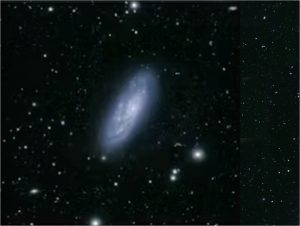
Figure 5. The Polar Ring galaxy viewed with an
optical telescope. Credit: Sloan Digital Sky Survey.
This Polar Ring galaxy hides a secret from optical telescopes. Viewed through an optical telescope, this galaxy looks like countless other galaxies, as shown in Figure 5.
However, the galaxy NGC 4632 is one of the first cases in which a polar ring was detected by a radio telescope survey. The highlighted composite image combines this gas ring, observed with the exceptionally sensitive ASKAP telescope, with optical data from the Subaru telescope.
According to current knowledge, the galaxy is surrounded by a ring of cold hydrogen gas orbiting at a 90-degree angle to its spiral disk. Polar ring galaxies like this one have been identified by stellar observations before. See Figure 6.
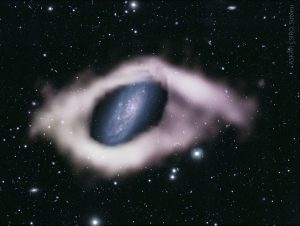
Figure 6. The Polar Ring galaxy has a hidden
polar ring seen with the new ASKAP telescope.
Credit: J. English, N. Deg & WALLABY Survey,
CSIRO/ASKAP, Subaru Telescope.
Astronomers use virtual reality to separate the hydrogen gas in the main disk of the galaxy from the ring and track its orbital motion. They believe that polar rings can be formed by gravitational interactions between galaxies or when hydrogen gas from the cosmic web accumulates in a galaxy’s ring and leads to star formation. In a stunning application of virtual reality, astronomers reveal a hidden ring of cold gas surrounding the galaxy NGC 4632, discovered by the CSIRO’s ASKAP radio telescope.
Cosmologists also believe this unique structure could represent a polar ring orbiting the galaxy at a 90-degree angle, shedding light on the galaxy’s dark matter distribution and evolutionary theories.
However, according to TDU, the cosmic ribbon near the PolarRing nebula has nothing to do with the galaxy itself. Rather, it is created by hydrogen gas escaping through the boundary of a white hole between that galaxy’s universe and our own. Please watch the video here
[8].
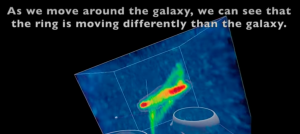
Figure 7. The cosmic ribbon is actually the border of
a white hole. Credit: J. English, N. Deg, CSIRO/ASKAP,
and Subaru Telescope.
This is the first example of a galaxy we see beyond our own universe, in a universe we suppose is the one from which our own Milky Way galaxy also emerged. But we do not know for sure; with its ribbon, we only know we view it through a white hole.
3.2. The Orion Nebula (M 42).
The Orion Nebula in Figure 8 is located about 1300 light-years from Earth in the so-called “Sword” of the constellation Orion the Hunter, and the image shows a region that is 4 by 2.75 light-years in size. This nebula, also known as M42, is one of the best-studied celestial objects. The data for the Orion Nebula comes primarily from a variety of telescopes and instruments at different wavelengths.

Figure 8. Orion Nebula (M 42): The Hubble View.
Credit: NASA, ESA, M. Robberto (STScI/ESA)
Optical observations from the Hubble Space Telescope revealed intricate details of the nebula’s structure, including its bright central region where the Trapezium cluster is located. Infrared data from the Spitzer Space Telescope provided insights into the nebula’s star-forming regions, which are obscured by dust. In the radio range, the Very Large Array (VLA) provided a view of the cold gas and the dynamics of the molecular clouds.
Ground-based telescopes such as the Keck Observatory and the Very Large Telescope (VLT) of the European Southern Observatory (ESO) provided high-resolution spectroscopic data that are crucial for understanding the chemical composition of the nebula and the physical processes taking place. Multi-wavelength surveys were crucial for mapping the complex magnetic fields, gas flows and ionization zones of the nebula.
All this data from before 2023 laid the foundation for comprehensive multidisciplinary studies and helped astrophysicists and cosmologists to formulate hypotheses about stellar evolution, planet formation and the dynamics of interstellar material.
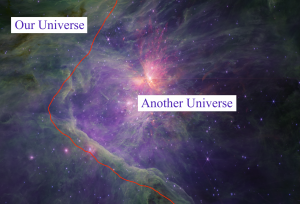
Figure 9. The Orion Nebula view with the NIRCam
instrument. Credit: CSA James Webb Space Telescope,
NASA, ESA.)
Yet in October 2023, the NIRCam instrument on the NASA/ESA/CSA James Webb Space Telescope with its advanced infrared capabilities provided a groundbreaking view of the Orion Nebula. (See Figure 9.)
The image was taken with remarkable thermal infrared sensitivity and shows a complex interplay of ionized gas, dust and molecules. In this vibrant scene inside the galaxy, thousands of new stars have been discovered, ranging from 40 times to less than 0.1 times the mass of the Sun [9]. The stars of the Trapezium cluster have dug a cavity in the huge molecular cloud from which they formed, which can be clearly seen in the image.
This visual spectacle is accentuated by ionized purple gas concentrated in the center and punctuated by green and darker brown tones in the periphery. While the nebula fades to near black on one side, it is interspersed with thousands of fainter stars, the brightest of which exhibit the characteristic Webb diffraction spikes.
According to current knowledge, the inner cavity of this young, one-million-year-old star-forming region is predominantly filled with ionized gas, which appears purple. The surrounding areas show a rich mixture of dust and molecular gas in various shades of red, brown and green. The Bright Bay in the upper left is eroded by the massive central stars of the nebula, which also form columns of gas and dust.
However, according to TDU, this inner cavity is not a celestial body of our universe per se, but a hole (a white hole) from another universe with its own sky and various kinds of celestial bodies. For clarity, we traced the red line close to the border to show the two universes. Also, the gases we see on our universe were simply leaked into it from the other universe.
Another groundbreaking discovery relates to the chemical composition of the nebula. The high-resolution spectroscopic capabilities of the NIRCam instrument enabled the identification of complex organic molecules that provide tantalizing clues to the origin of the building blocks of life in such stellar nurseries.
3.3. The Carina Nebula (NGC 3372).
The Carina Nebula, one of the largest and brightest nebulae in the sky, is an expanding cloud of gas and dust in which the raw material for star formation is intricately woven into a tapestry of interstellar complexity. Now, it is believed that this nebula is an incubator for star formation, in which new stars are created by the gravitational collapse of dust and gas.
This region of nebula space is a laboratory for astronomers to study the life cycle of stars and the interaction of stellar winds and radiation with the interstellar medium [10].
The Carina Nebula is located around 7,600 light years from Earth and can be seen in the southern constellation of Carina. It has fascinated astronomers for many years and with each new technological advance we can unravel another layer of its mystery.
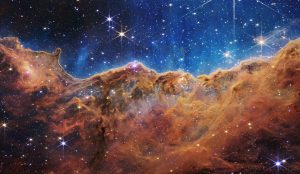
Figure 10. Carina Cliffs from the Webb Space
Telescope. Credit: NASA, ESA, CSA, STScI
The Carina Nebula is not just a single entity but a complex of different regions with different characteristics. One of the most striking features within this nebula is the Homunculus Nebula, which is located around the unstable massive star Eta Carinae – one of the most massive binary star systems known. This star is prone to violent outbursts, during which it sheds its mass and contributes to the nebula’s sculptural appearance.
The nebula also harbors the Keyhole Nebula, a smaller dark nebula of cold molecules and dust that is located in front of the larger nebula, absorbing its light and creating a strong contrast. This phenomenon is so named because of its unique shape, which resembles a keyhole when viewed from Earth. It contains several dense clumps of material that are the birthplaces of new stars.
The varied landscape of the Carina Nebula is also characterized by huge hydrogen clouds that glow brightly due to ionizing radiation from the young, hot stars inside. These clouds are often referred to as H II regions, which stands for ionized hydrogen gas. The mixture of dark dust clouds and bright gas in the nebula creates a stunning visual contrast that illustrates the dynamic processes inside the nebula.
The stars of the open star cluster NGC 3324, which is located within the Carina Nebula, have a special influence on the shape of their surroundings. These stars, with their intense radiation and winds, are responsible for shaping the dramatic landscape of the nebula. The stellar winds blow away lighter elements and release denser regions that can collapse under their own gravity and form new stars.
This is the environment into which the James Webb Space Telescope (JWST) has turned its gaze, giving us an unprecedented view of this nebula. Infrared observations penetrate the dusty veil of the nebula, revealing the hidden processes of star formation and the intricate details of its structure. The telescope’s advanced instruments have captured images of the nebula with a clarity and detail that far surpasses previous observations.
The images from JWST show the jagged cliffs of the nebula, created by the forces of the stars in NGC 3324. These cliffs are part of the so-called Gabriela Mistral Nebula, named after the Chilean poetess because its silhouette resembles her profile. The telescope’s ability to observe in the infrared has allowed us to see these structures in a new light, revealing details that were previously hidden.
With its dynamic environment and impressive beauty, the Carina Nebula remains one of the most fascinating objects of study in our galaxy. The observations of this nebula by the James Webb Space Telescope are a testament to humanity’s continued desire to explore and understand the cosmos. As we continue to gaze at the stars, the Carina Nebula reminds us of the wonders that await us in the vastness of space.
TDU view: If we compare the above description with the image in Figure 10, we understand that cosmologists called this celestial phenomenon “nebula” because they simply could not imagine that it is a white hole into another universe. The lower part of the image is closer to us than the upper part because is the border of our universe. Also, what astronomers think are cliffs is just the irregular edge of this white hole in the boundary of our universe.
3.4. The Ring Nebula ( M57).
The fourth celestial body is the Ring Nebula (M57) in Figure 11, which is located in the constellation Lyra and is part of the Milky Way galaxy. It is one of the most famous planetary nebulae and is located about 2,283 light years from Earth.
According to current knowledge, this nebula is formed by the outer layers of a dying star that has shed its outer layers and left behind a white dwarf star at its center. The nebula’s colorful rings are the layers of gas and dust that the star ejected in the late stages of its evolution.

Figure 11. M57 The Ring Nebula. Credit: NASA,
ESA, CSA, JwstKong
Strands of gas that look like eyelashes around a cosmic eye are visible in this digitally enhanced image in assigned colors around the ring.
The nebula carries elements such as carbon, oxygen and nitrogen into the interstellar medium. This material will later be incorporated into the next generation of stars and their associated planets.
However, the Ring Nebula has a secret that cannot be discovered without the knowledge of the multiverse. Once again, it is not another nebula or cosmic object, as is assumed today, but a large opening in the boundary between our universe and the universe that leaks the Milky Way and allows us a glimpse into its interior.
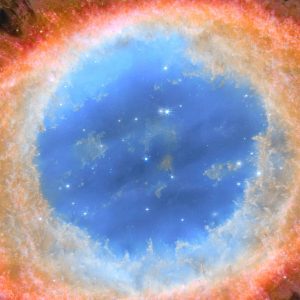
Figure 12. The enlarged center of the Ring Nebula
shows inside stars. Credit: Convergetics Research Center.
4. The multiverse paradigm of physical reality
In recent decades, many scientists have hypothesized that we live in a multiverse reality. One of the most prominent among them, Lord Martin Rees, even said in 1998 that “our entire universe may be just one element – one atom, as it were – in an infinite ensemble: a cosmic archipelago.”
He is right, but neither he nor any other scientist could prove this and did not even explain why they could not.
However, before we delve deeper into the structure of reality, it is important to know three facts that do not exist in the current paradigm of a unique universe, but are crucial to understanding the multiverse paradigm of physical reality.
4.1. On elementary particles and quantum spaces.
To understand multiple universes, the largest structures of reality, we must first understand the other end of the cosmic scale: the microscopic extreme of elementary particles – the fundamental constituents of all matter.
According to current science, elementary particles are intriguingly conceived as existing in quantum spaces. This perspective is deeply rooted in quantum field theory and particle physics.
Put simply, these particles do not actually exist in our physical universe, where they appear merely as point-like, dimensionless entities that are explained solely by their quantum nature. In this quantum framework, the particles are understood by using complex numbers and are viewed as excitations in their respective quantum fields. An electron, for example, is an excitation in the electron field, similar to a ripple in a pond.
The principle of quantum superposition also plays a central role. It is also believed that particles can exist in multiple states simultaneously until they are measured, a phenomenon famously illustrated by Schrödinger’s cat thought experiment. This quantum behavior underpins the uncertainty principle, which states that certain pairs of physical properties, such as position and momentum, cannot be known exactly at the same time.
Elementary particles also exhibit wave-particle duality, i.e. they exhibit particle-like and wave-like properties at the same time. For example, electrons in a double-slit experiment can exhibit interference patterns, a hallmark of wave behavior, but also exhibit particle properties when they interact with other particles.
The July 2023 article “Breaking the Cosmic Code: Quantum Spaces Are Real, Not Imaginary Structures” challenges the conventional understanding by presenting a different perspective: The quantum spaces in which elementary particles reside are real and distinct spaces and not abstract mathematical structures, as currently assumed. These spaces are embedded in the space of the universe, but they are different from it.
However, if theoretical observers could look at a particle “from the inside,” they would perceive a physical space with non-zero finite dimensions. From a physical perspective, this groundbreaking view suggests that “absolutely everything” could exist in these external spaces, regardless of their size or complexity.
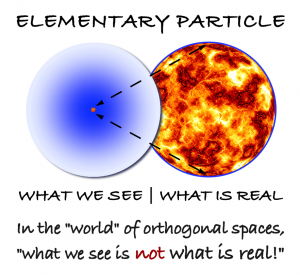
Figure 13. The elementary particle. Credit:
Convergetics Research Center CC BY-NC-ND 4.0.
This discovery changes our understanding of elementary particles as mere point-like, dimensionless entities separate from our physical universe. They are “really” real and exist in their own micro-universes. Yet, we have no idea of the real size of their spaces because our view is limited to the boundaries of our universe.
The same situation applies to other universes that are invisible from our universe, yet perfectly real.
4.2. Invisible universes.
This phenomenon is based on the previous section on elementary particles and explains that the same situation applies to the “invisible universes” that leak energy and matter into our universe, but which we cannot see. They are invisible to us simply because we can only see within our universe or if there are openings between our universe and another.
The best example for understanding this phenomenon of “invisible universes” is the celestial structure NGC 6302, the Butterfly Nebula in Figure 14 below.
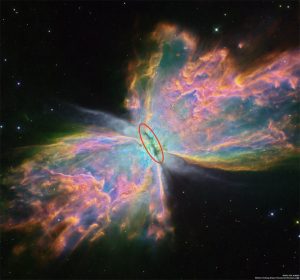
Figure 14. NGC 6302, the Butterfly Nebula. Credit:
NASA, ESA, Hubble CC BY-SA 3.0 IGO.
The structure of this nebula is one of the most complex ever observed in planetary nebulae.
“A dark lane (highlighted in the image by the red oval) runs through the waist of the nebula obscuring the central star at all wavelengths [11].”
The spectrum of NGC 6302 shows that the central star is one of the hottest known stars, with a surface temperature of over 250,000 degrees Celsius, but probably escaped detection due to a combination of its high temperature, dusty torus and bright background.
According to current knowledge, the star from which it formed must have been very large.
However, the exact opposition of the Butterfly’s wings points to another possibility: The narrow black region in the center did not form from a very large star, but belongs to a very large universe that we cannot see from our universe. This universe projects its gaseous wings containing huge amounts of oxygen (shown in blue), hydrogen (green), and nitrogen (red) into our universe and extends over 3 light years.
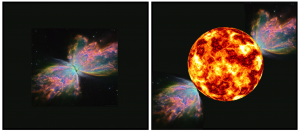
Figure 15. The Butterfly Nebula: What we see and
what is real. Credit: Convergetics Research Center
4.3. The boundary effect.
The second phenomenon is the “boundary effect,” the mechanism by which the energy and matter that exist inside a universe penetrate its boundary and leak into our universe, creating all the energy and cosmic objects that exist in it. Each time the boundary is crossed, one form of matter transforms into another, one level more complicated in the periodic table.
For example, the pure energy that was present in the original universe is transformed into elementary particles. In fact, it is known in physics that the universe contains a considerable number of free elementary particles, such as the electrons and neutrinos produced by the Sun and other stars.

Figure 16. Vortex. Credit: Scientific American
We do not yet know exactly how this mechanism works. Inspired by the vortex theory of Rene Descartes [12], we are currently investigating a theory involving vortices, as in Figure 16, which is based on the observation that the vast majority of celestial bodies swirl around themselves and around other centers, such as the Earth, which also rotates around the Sun and thus around the Milky Way. And, the galaxy is also in motion, just like all the other galaxies in the universe.
We call these boundary effects “white holes” because they bring energy and matter from other universes into ours and are the opposite of black holes.
We remember that black holes are regions of spacetime that have such a strong gravitational acceleration that nothing – neither particles nor electromagnetic radiation such as light – can escape from them. Scientists say: “Black holes are fascinating because they represent a frontier in our understanding of physics.”
However, the theory of decaying universes allows us to learn that black holes are regions through which energy and matter escape from our universe into other universes.
The various components of the Milky Way, including stars, planets and other celestial objects, orbit around the supermassive black hole at its center, known as Sagittarius A*. The rotation of the whole our galaxy supports the theory that our universe leaks into another universe through this Sagittarius A* black hole.
The Milky Way is part of a collection of galaxies known as the Local Group, which also includes the Andromeda Galaxy (M31), the Triangulum Galaxy (M33) and numerous smaller galaxies. There is no established theory about what holds the Local Group together as a whole and what force moves it through space. Could it be other, larger universes in which our universes are nested?
5. The Theory of Decaying Universes
5.1. The structure of the multiverse reality.
The “Theory of Decaying Universes” hypothesizes that reality consists of an initial overarching universe of pure energy – let us call it G0 (generation zero) – that leaks its energy into a first generation of universes – let us call them G1 universes – through vortices that penetrate its boundary. The passage through this boundary converts part of the pure energy in the universe G0 into elementary particles.
Note that free elementary particles that have “survived” the passage from other universes also exist in our universe. (Also note that an elementary particle is a particle that is not composed of smaller particles (at least according to the current state of science). Examples of elementary particles are quarks, leptons (like electrons and neutrinos) and gauge bosons (like photons).)
Further on, G1 universes leak into G2 universes and part of their contents is converted into particles of ionized hydrogen gas by the boundary effect, such as in the Orion Nebula.
Similarly, G2 universes leak into G3 universes, with part of the leaked contents being converted a second time from hydrogen to helium, and another part is passing through unchanged, as with the contents of the Butterfly Nebula, which consists mainly of hydrogen and helium.
Further generations of universes are formed, with each new transition leading to the creation of ever more complex forms of matter. These new forms of matter are created at the boundaries of these universes and lead to the formation of galaxies as boundary effects.
In our own Milky Way galaxy, celestial bodies such as stars and planets have various compositions of complex matter, including those similar to the magma ejected by Earth’s volcanoes.
We hypothesize that behind each galaxy or cluster of galaxies is a different universe.
Since we do not yet know the exact position of our universe in the series of decaying universes, it is more convenient to consider it as our reference point. We therefore refer to it as universe U0 (U zero). In this context, we would refer to the universe from which the Milky Way emerged as universe U−1 (U minus one).
If we look at the chain of decaying universes from a larger perspective, our galaxy is part of the cluster “Local Group” leaked from the universe U−2 (U minus two).
However, the Local Group cluster is itself part of the “Virgo supercluster”, which emerged from the universe U−3 (U minus three). Finally, this supercluster is in turn part of the “Laniakea supercluster”, which emerged from the universe U−4 (U minus four).
5.2. Comparison of current science with TDU. Let us now compare the knowledge accumulated over centuries about the cosmos with its galaxies, nebulae, etc. with the new interpretation provided by the Theory of Decaying Universes (TDU).
Understanding stellar populations is crucial in astrophysics as it provides insights into the processes of star formation and the evolutionary history of galaxies. The metal content of a star can provide a lot of information about the environment in which it was formed. (Note that the term metals in astronomy refers to elements other than hydrogen and helium.)
In astronomy, stars are classified in three populations:
-
Population III stars (Pop III):
- AGE: Hypothetical and very ancient.
- METLLICITY: It is assumed that they contain almost no metals. These stars would have formed from the primordial material of the Big Bang, which consists mainly of hydrogen, helium and traces of lithium.
- LOCATION: These stars have not been directly observed, but are thought to have existed in the early universe and may be responsible for the reionization of the cosmos.
- TDU view: These stars have not been directly observed because they never existed. They do not have enough metallic material to be bright stars. They are the nebulae common in galaxies that have the necessary conditions for star formation.
However, not all galaxies contain nebulae. The estimated number of nebulae in the Milky Way galaxy based on current astronomical surveys suggest several thousands, but their exact number is not precisely known.
-
Population II stars (Pop II):
- AGE: These are older stars.
- METLLICITY: They have a lower metallicity, which indicates that they formed earlier in the history of the universe, before many of the heavier elements had formed in stars.
- LOCATION: Typically found in the bulges and halos of galaxies and in globular clusters.
- TDU view: This stellar population confirms that older stars were formed during older generations of universes, i.e. at the beginning of the chain of decaying universes.
-
Population I stars (Pop I):
- AGE: These are relatively young stars.
- METLLICITY: They have a higher metallicity.
- LOCATION: They typically occur in spiral arms, young clusters and the disks of galaxies.
- EXAMPLE: The Sun is considered a Population I star.
- TDU view: Young stars have evolved from the later generations of universes.
5.3. Other differences between current science and TDU.
-
The universe is expanding.
Current Science: This idea is one of the fundamental concepts of modern cosmology and was first observed by Edwin Hubble in the late 1920s. He observed that galaxies were moving away from us, with more distant galaxies moving away faster than closer ones (Redshift of Distant Galaxies).
-
TDU view: The formation of all universes – including our universe – is an ongoing process that causes them to expand. Many universes belonging to all generations leak into our universe through boundary effects. Our universe and all other universes are constantly expanding because of all the stuff flowing into them.
On their side these are black holes, on our side we see them as white holes: galaxies, stars, planets and other celestial
bodies. - TDU view: All black holes existing in our universe leak into other universes, where the leaked materials appear through white holes.
-
-
Current challenges and unsolved mysteries
- The mystery of Dark Matter: While its effects are observed, its true nature remains unknown.
- Accelerating universe: The role of dark energy in accelerating the expansion of the universe.
-
Key points:
Scientists believe that dark matter and dark energy together make up about 95% of the universe. Only about 5% of the universe consists of the “ordinary” matter we know (stars, planets, galaxies and other celestial objects).
Both concepts challenge the current understanding of physics.
- Current Science: Dark matter is thought to be a form of matter that does not emit, absorb or reflect light. It also does not interact with electromagnetic forces, which means that it cannot be directly seen. However, scientists believe they know it exists because its gravitational pull affects visible matter, radiation and the large-scale structure of the universe.
Dark matter is not made up of atoms like ordinary matter
(which is made up of protons, neutrons and electrons).
Instead, many scientists hypothesize that dark matter consists of as yet undiscovered subatomic particles. -
TDU view: Dark matter is not needed to explain anything. The hypothesis that matter consists of as yet undiscovered subatomic particles is meaningless.
TDU view: Simply put, dark matter does not exist!
- Current Science: Dark energy is a mysterious force that drives the accelerated expansion of the universe and seems to have a repulsive effect that makes the universe expand increasingly faster.
-
TDU view: Dark energy is not needed to explain the expansion of the universe. The universe is expanding because it receives energy and matter from all the white holes opening up from other universes: Stars, nebulae, planets, and so on. This hypothesis of a “mysterious force that seems to have a repulsive effect” is also meaningless.
TDU view: Simply put, dark energy does not exist either!
- Current Science: Dark matter is thought to be a form of matter that does not emit, absorb or reflect light. It also does not interact with electromagnetic forces, which means that it cannot be directly seen. However, scientists believe they know it exists because its gravitational pull affects visible matter, radiation and the large-scale structure of the universe.
5.4. The DNA of the stars.
What stars are made of can tell us something about their birthplace and their subsequent journey, and thus about the history of the Milky Way.
With Data Release 3, Gaia offers us the largest chemical map of the galaxy combined with 3D motions, from our solar neighborhood to smaller galaxies around us.
The chemical composition of a star is therefore something like its DNA
and provides us with crucial information about its origin.
According to current understanding, Gaia tells us that some stars in our galaxy consist of primordial material, as only light elements (hydrogen and helium) were created in the Big Bang.
- According to TDU, the primordial material leaked from the universes G1 and G2 consists of hydrogen and helium, which confirms the nucleosynthesis of the Big Bang.
According to current knowledge, all other heavier elements – called “metals” by astronomers – are formed inside stars such as our Sun, which contain more “heavy metals” because they are made of matter enriched from previous generations of decaying universes.
- According to TDU, all other heavier elements are formed by successive boundary effects during transitions to newer decaying universes.
References
[1] Martin Rees. The multiverse: our universe is suspiciously
unlikely to exist – unless it is one of many, 2023. URL
https://theconversation.com/the-multiverse-our-universe-is-suspiciously-unlikely-to-exist-unless-it-is-one-of-many-200585.
[2] ESA Media Relations. You are here, 2022. URL
https://www.esa.int/Science_Exploration/Space_Science/Gaia/Gaia_sees_strange_stars_in_most_detailed_Milky_Way_survey_to_date.
[3] ESA Media Relations. Gaia overview, 2022. URL
https://www.esa.int/Science_Exploration/Space_Science/Gaia/Gaia_overview.
[4] ESA Media Relations. Gaia data release 3, 2022. URL
https://www.cosmos.esa.int/web/gaia/data-release-3.
[5] ESA Media Relations. Gaia data release 3, 2022. URL
https://www.gaia.ac.uk/data/gaia-data-release-3.
[6] Alex Lobel. The asymmetric milky way in motion, 2022. URL
https://www.esa.int/ESA_Multimedia/Videos/2022/06/The_asymmetric_Milky_Way_in_motion#.
[7] ESA Media Relations. Gaia data release 3:
exploring our multi-dimensional milky way, 2022. URL
https://www.esa.int/ESA_Multimedia/Videos/2022/06/Gaia_data_release_3_exploring_our_multi-dimensional_Milky_Way.
[8] IDIA Visualisation Laboratory.
Astronomers reveal cosmic ribbon around rare galaxy, 2023. URL
https://www.youtube.com/watch?v=dkMr-D2719w.
[9] ESA Media Relations. The orion nebula
view with the nircam, 2022. URL
https://www.esa.int/ESA_Multimedia/Images/2023/09/Orion_Nebula_in_NIRCam_long-wavelength_channel.
[10] NASA ESA et al. Carina cliffs from the webb space telescope.,
2022. URL https://apod.nasa.gov/apod/ap220905.html.
[11] Matsuura et al. The dark lane of the
planetary nebula ngc 6302, 2005. URL
https://academic.oup.com/mnras/article/359/1/383/984080.
[12] Edward Slowik. Descartes’ physics, 2021. URL
https://plato.stanford.edu/archives/win2021/entries/descartes-physics/.
